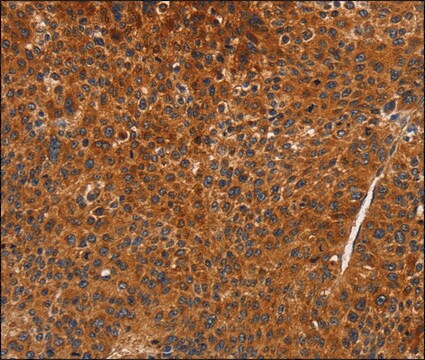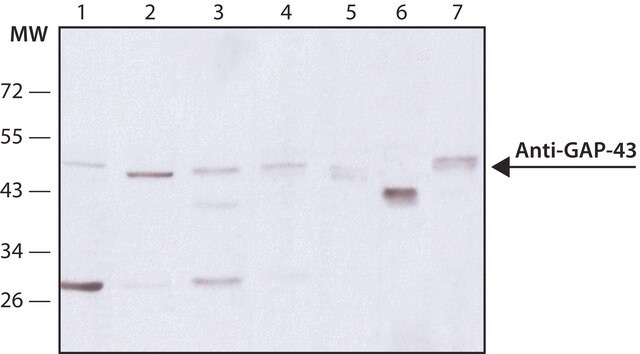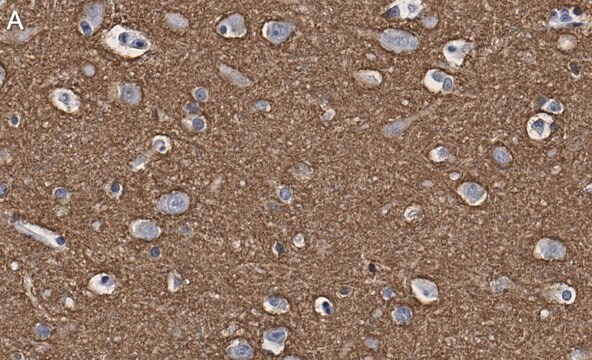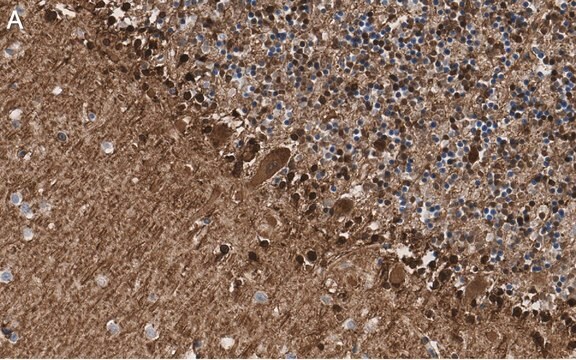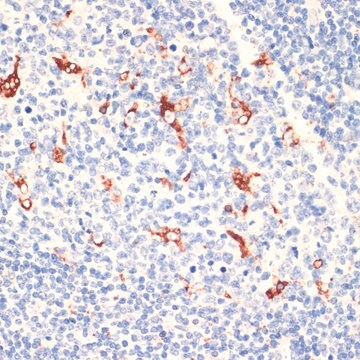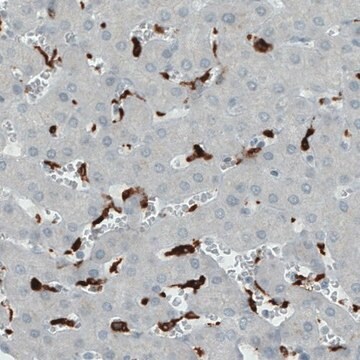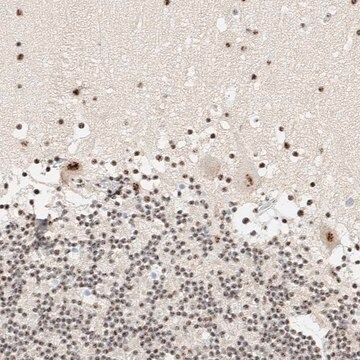E2906
Anti-dEGF Receptor, Extracellular Domain antibody, Mouse monoclonal
clone C-273, purified from hybridoma cell culture
Sinónimos:
Anti-Drosophila Epidermal Growth Factor Receptor, Anti-dEGFR
About This Item
Productos recomendados
biological source
mouse
Quality Level
conjugate
unconjugated
antibody form
purified immunoglobulin
antibody product type
primary antibodies
clone
C-273, monoclonal
form
buffered aqueous solution
species reactivity
Drosophila
concentration
~1.2 mg/mL
technique(s)
immunohistochemistry: suitable
indirect ELISA: suitable
western blot: 0.25-0.5 μg/mL using recombinant protein representing amino acids 299-359 of the Drosophila EGFR extracellular domain
isotype
IgG1
shipped in
dry ice
storage temp.
−20°C
target post-translational modification
unmodified
Gene Information
Drosophila melanogaster ... Egfr(37455)
Categorías relacionadas
General description
Application
- Immunohistochemistry
- Indirect ELISA
- Western blotting at a concentration of 0.25-0.5μg/mL using recombinant protein representing amino acids 299-359 of the Drosophila EGFR extracellular domain
Biochem/physiol Actions
Physical form
Disclaimer
¿No encuentra el producto adecuado?
Pruebe nuestro Herramienta de selección de productos.
Related product
Storage Class
10 - Combustible liquids
wgk_germany
WGK 3
flash_point_f
Not applicable
flash_point_c
Not applicable
Elija entre una de las versiones más recientes:
Certificados de análisis (COA)
¿No ve la versión correcta?
Si necesita una versión concreta, puede buscar un certificado específico por el número de lote.
¿Ya tiene este producto?
Encuentre la documentación para los productos que ha comprado recientemente en la Biblioteca de documentos.
Nuestro equipo de científicos tiene experiencia en todas las áreas de investigación: Ciencias de la vida, Ciencia de los materiales, Síntesis química, Cromatografía, Analítica y muchas otras.
Póngase en contacto con el Servicio técnico